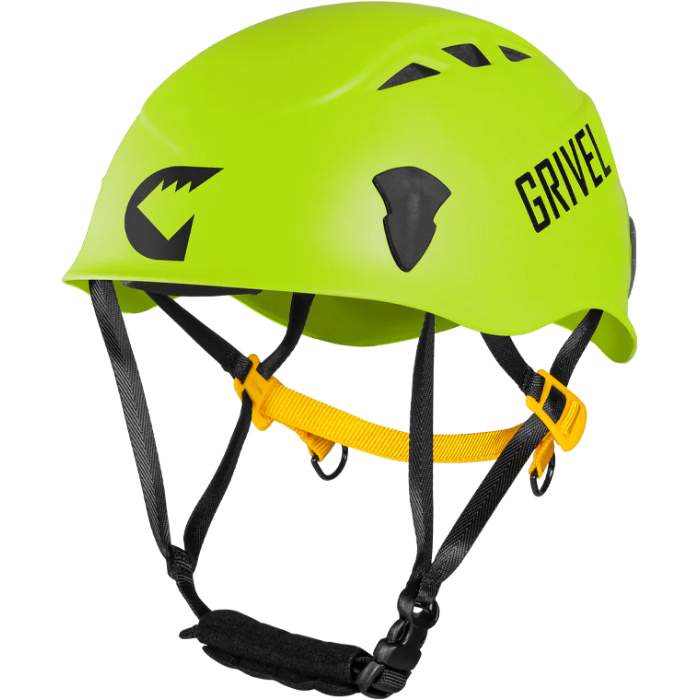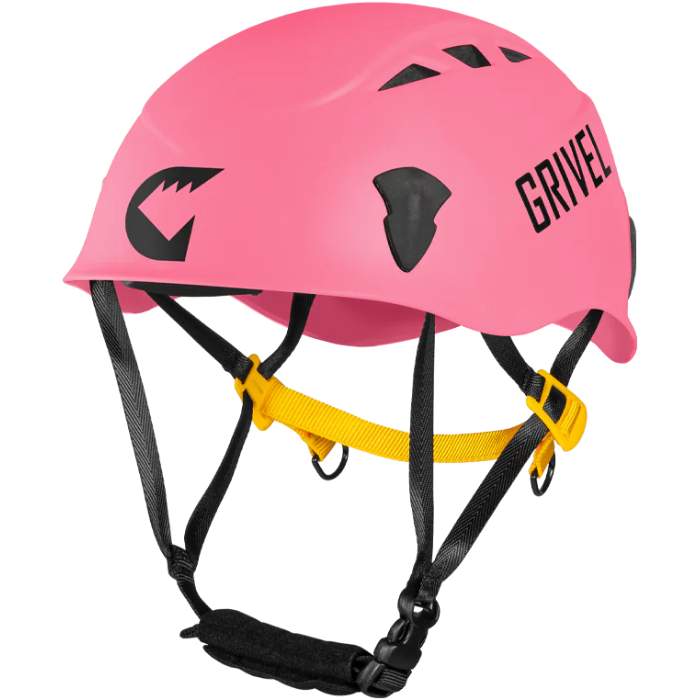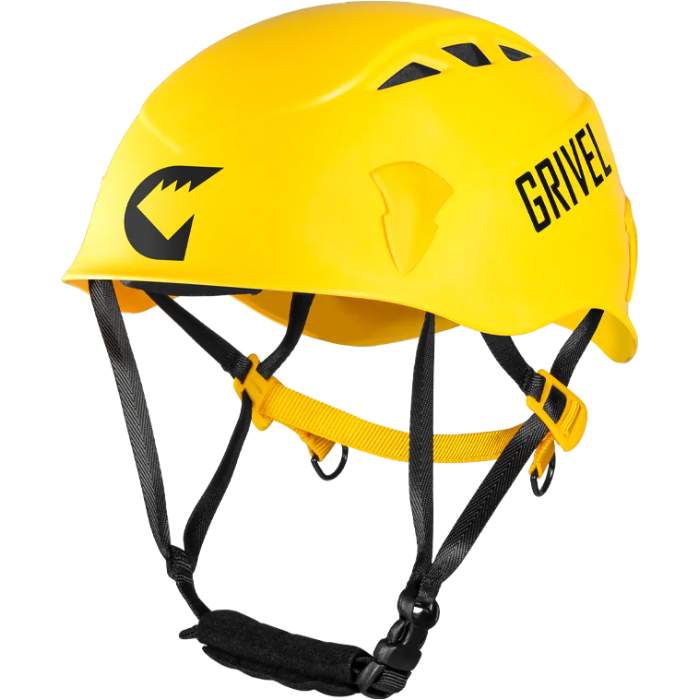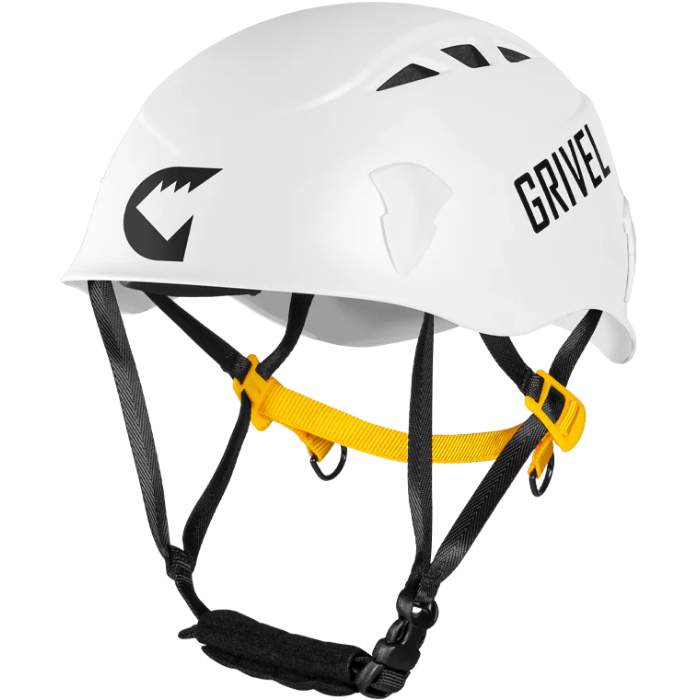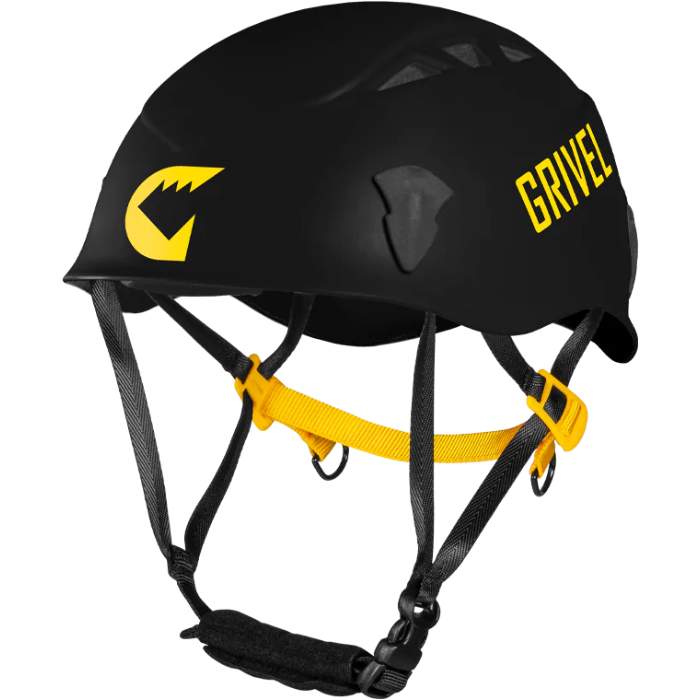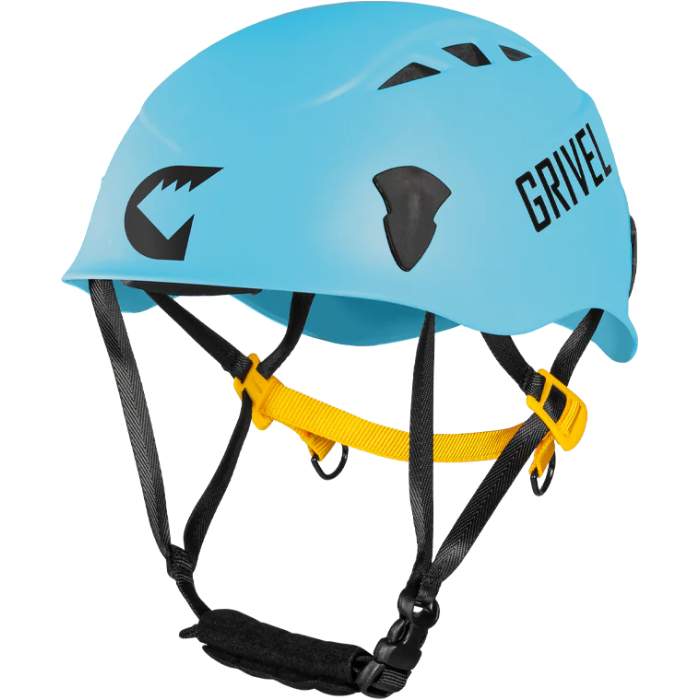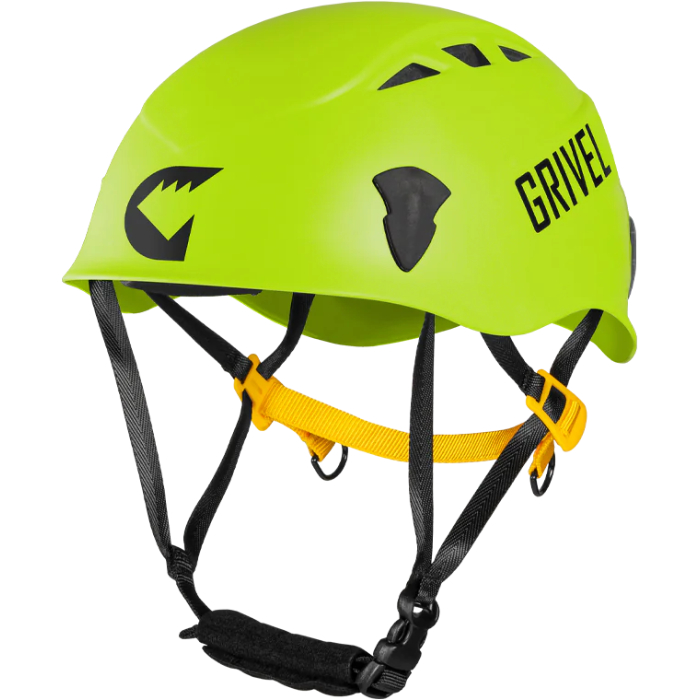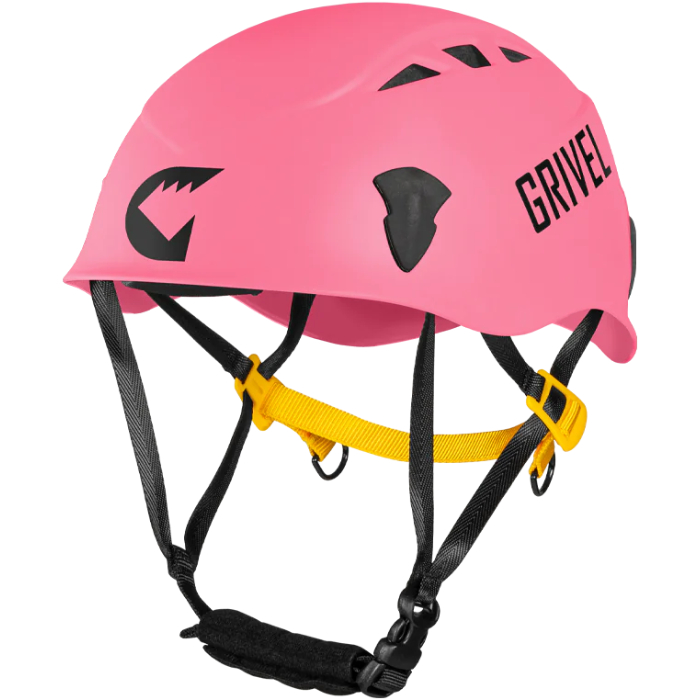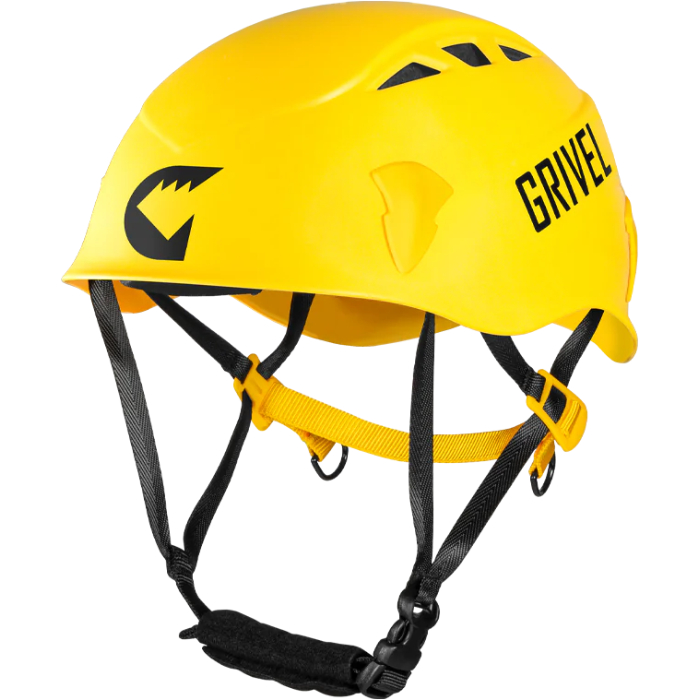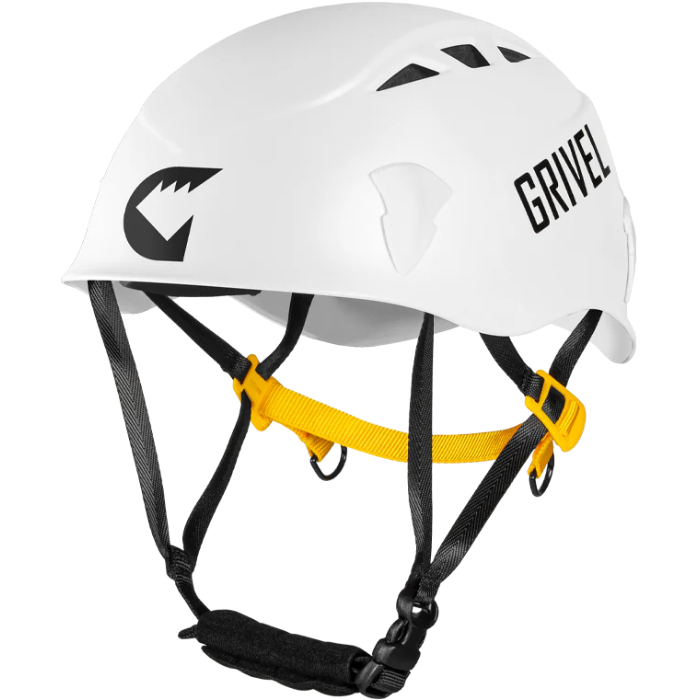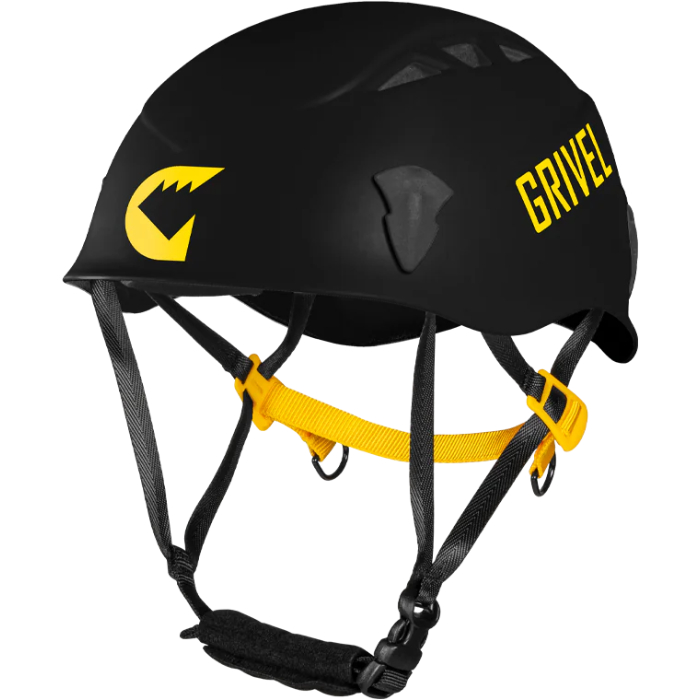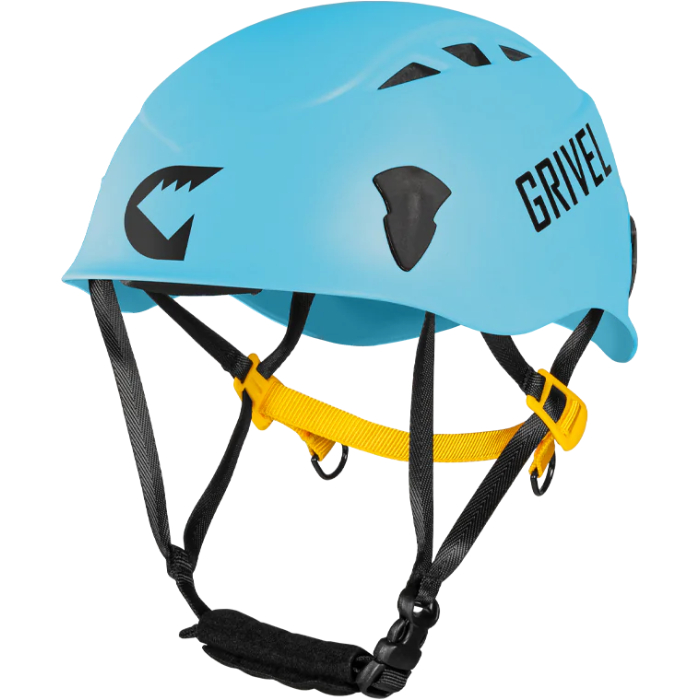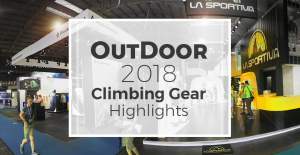A pictoral representation of the UIAA-106 and EN-12492 standards for helmets.
Salamander 2.0
Description
Classic hard-shell helmet, practical and robust.
Salamander 2.0 has an external ABS shell that protects against penetration and an internal polystyrene (EPS) to absorb shocks. It has four headlamp clips. Air circulation is extremely efficient through the openings. One size (54-61 cm) which can be adjusted once the helmet is worn. The adjustment straps can all be folded inside the helmet to reduce the volume and allow compact storage in the backpack or bag. The name recalls a very successful historic model of Grivel.
Retail price
This Product is Hard to Find.
We don’t know where you can buy this item online in the US. We’ll continue to check all the major retailers and will update this page as soon as we find one.
If you know where to find this online in the US, let us know, and we’ll add the link.
Weight (g)  Weight (g)In grams, the weight, as stated by the manufacturer/brand. If there are differences in weight (due to multiple size or optional accessories) we note those here. | 360 g One Size: 360 g / 12.7 oz |
Gender  GenderThis is the gender as stated by the manufacturer/brand. We use the term "Men" and "Unisex" interchangeably, as there is no difference between these types of helmets. |
Unisex |
Size Range  Size RangeThe sizing options of the helmet according to the manufacturer. | 21.20 in - 24.00 in One Size: 54 - 61 cm / 21.2 - 24 in |
Features  FeaturesBike Cert (EN 1078)The EN certification for helmets used for bicycling and skating. The major difference in testing 1078 involves needs for more head coverage and for the helmet to pass a deflection or 'roll-off' test of the impact force. BrimHaving a brim on a helmet may be inconsequential to some climbers but they make a great additional bit of protection against sun, rain and falling debris like small rocks or verglass. Multiple SizesThis is helpful for those with particularly small or large heads because helmets that come in 2 or 3 sizes cover a broader range of head size. Usually these are denoted as size 1 or 2, though some brands have S/M and M/L. Face Shield CompatibleFace shields are a part of PPE that could be handy when drilling, developing and cleaning particularly dirty remote routes. Usually only used by work at height professionals. MIPS technologyMIPS or Multidirectional Impact Protection System is a technology designed to reduce the amount of impact force that makes it to the brain. This is accomplished by adding a low friction cap between the liner and the helmet, allowing the shell to deflect around the head rather than transfer the forces from impact directly to the wearer. Many bicycle helmets include this feature and it is starting to be applied to sports like skiing, motorcycling and climbing. Many MIPS helmets are also EN1078 compliant. Ponytail CutoutSo far these are only found in "women's" helmets. It's a cutout / notch area that accommodates a low hanging ponytail hairstyle. RECCO® reflectorThese are used in locating someone missing or buried in an avalanche and are becoming more common in climbing gear due to the increased popularity of ski mountaineering. Though they are more often sold as something to add onto the helmet than being built into one, some manufacturers have begun to build them in. Ski Cert (EN 1077)The EN certification for helmets used for climbing and skiing. This test is simpler than the EN/UIAA one performed for helmets in general, but increases the amount of force that a helmet must endure. Likely this to simulate the faster speeds involved with downhill skiing impacts versus rockfall or climber accidents. This cert becoming more common in helmets as SkiMo popularity increases and more climbers are adding backcountry skiing to their mountaineering repertoire. |
|
Quick Adjust  Quick AdjustQuick Adjust refers to the straps of the helmet. Do you want the ability to ability to "quickly" adjust the fit. This could be a dial, or other plastic pieces. Really, most climbers don't need to change the fit of the helmet often, unless you're climbing with and without hats, or you have big hair that flattens and then requires tightening after climbing for awhile. |
No |
Vents  VentsRefers to openings in the helmet body to allow air flow. Commonly found in most helmets these days, but often more so in foam and hybrid foam helmets than traditional hardshell polycarbonate shells. Learn More
Click here to read more on helmet construction |
Yes |
Headlamp Compatable  Headlamp CompatibleMany helmets include hooks or clips for holding a standard headlamp in place, which is quite useful for the caver or alpinist. Ask any climber who has been benighted and they’ll tell you just how useful this feature can be. |
Yes |
Face Shield Compatable  Face Shield CompatibleFace shields are a part of PPE that could be handy when drilling, developing and cleaning particularly dirty remote routes. This feature isn't very common in climbing helmets and usually only used by work at height professionals. |
No |
| Certification | CE, UIAA |
No reviews yet.
First placing the helmet on my head, I had a quick learning curve to understand the suspension adjustment system – thin webbing with two small pull tabs. As I stated before, this helmet is adjustable between 54cm and 62cm, so it can fit a variety of head sizes, and figuring out exactly how the adjustment straps works is a breeze. A positive about this is the reduction of extraneous parts, thus making the 2.0 worry-free, as compared to other helmet manufactures suspension systems, which rely heavily on plastic click wheels or sliders to adjust.
There may be nothing remarkable about it, but the Grivel Salamander 2.0 is a good solid, well built helmet at a very fair price. As it is available in only one size, and a large one at that, it is best suited to those with larger heads. The strapping adjustment system has simplicity in its favour, and while it does not suit everyone, I've personally found it comfortable and effective. The key message here is to try it on before you buy it.
With its effective headtorch clips and tough ABS outer shell, this would be a decent choice for an all-rounder. However, though it is better-vented than the original version, the Salamander 2.0 doesn't compete with the modern style of polystyrene helmet for either lightness or ventilation, so it might not be our first choice for warm weather cragging. As a robust shell-style helmet built to take abuse, it is arguably best suited to mountaineering and winter climbing.
The UIAA equipment standard provides a baseline for equipment performance in a test lab under controlled conditions on new equipment. Although these test conditions are relevant to the conditions encountered climbing, conditions encountered at the crags and the condition of the equipment are equally important. This recommendation from the UIAA member federation The British Mountaineering Council (BMC) provides vital equipment information that is NOT explicitly addressed in the standard, particularly failure modes of the equipment and recommendations for the use, inspection, maintenance, and retirement of equipment.

